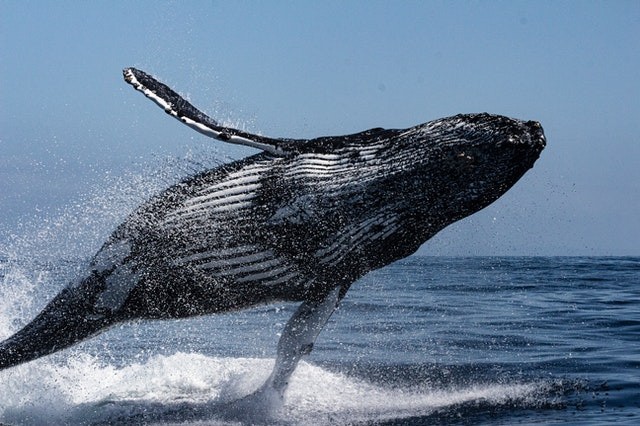This month, a gray whale off the coast of California was seen without its tail, showing that it had figured out how to swim on its side.

Injured Whale
According to Jessica Roame via Insider, the education manager at Newport Whales in California, the tail-less whale was probably traveling the 6,000-mile trek between feeding grounds in Alaska and nesting grounds close to Mexico.
The study suggests the whale's tail injury hasn't hindered it from obtaining food or migrating, according to Newport Whales, who told Fox LA that the whale is "maybe a bit underweight but not significantly so," Roame said the outlet.
How Whales Swim
Whales primarily use their flukes to propel themselves.
Whales use their tail fins to help them move through the water when swimming. The flipper moves continuously. While their flippers are primarily utilized for steering, whales propel themselves through vertical movement by swinging their tail fin and lower torso up and down.
Certain animals may move more quickly by logging out of the water. They can swim rapidly because of their skeletal structure. Dorsal fins are present in most species.
Can An Injured Whale Still Swim?
A humpback whale obsered by scientists for over ten years finally completed swimming more than 3,000 miles from Canada to Hawaii while still in "severe agony" due to a fractured spine, as per USA Today.
According to a Facebook post by the non-profit research organization BC Whales, Moon, a lone humpback whale, went from British Columbia to Maui with a significant spinal injury brought on by a vessel strike.
Newport Coastal Adventure, a boat charter company, used a drone to film the fluke-less whale in action.
Ryan Lawler, the proprietor of Newport Coastal Experience, reported to The Orange County Register in California that his business discovered the whale on March 13.
He said they saw it bending heavily to one side and swimming with just its pectoral fins.
According to Lawler, who spoke to The Orange County Register, "It had a distinctive swimming technique because it had to make up for not having a tail anymore."
Whales Struggling
In contrast to the average swimming pace of an adult gray whale, which is four miles per hour, Lawler claimed the whale was moving at three miles per hour.
According to Fox LA, which cited whale experts, the whale probably lost its tail after being entangled in industrial fishing equipment.
In February 2018, a second gray whale lacking a tail was spotted around Newport.
The specimen was moving toward the north, "favoring its right side with each breath," according to a photographer who recorded it.
But, despite the disability, the whale appears to be doing well as it adjusts to losing an essential limb, according to photographer Brooke Palmer.
If the whale seen in March 2018 was the same whale observed in 2018, it is uncertain.
For more biology news, don't forget to follow Nature World News!
© 2025 NatureWorldNews.com All rights reserved. Do not reproduce without permission.





